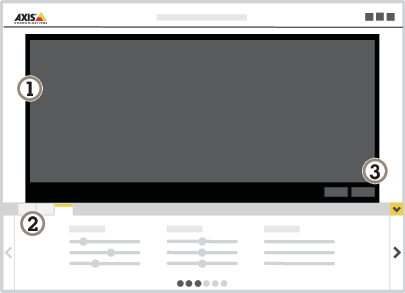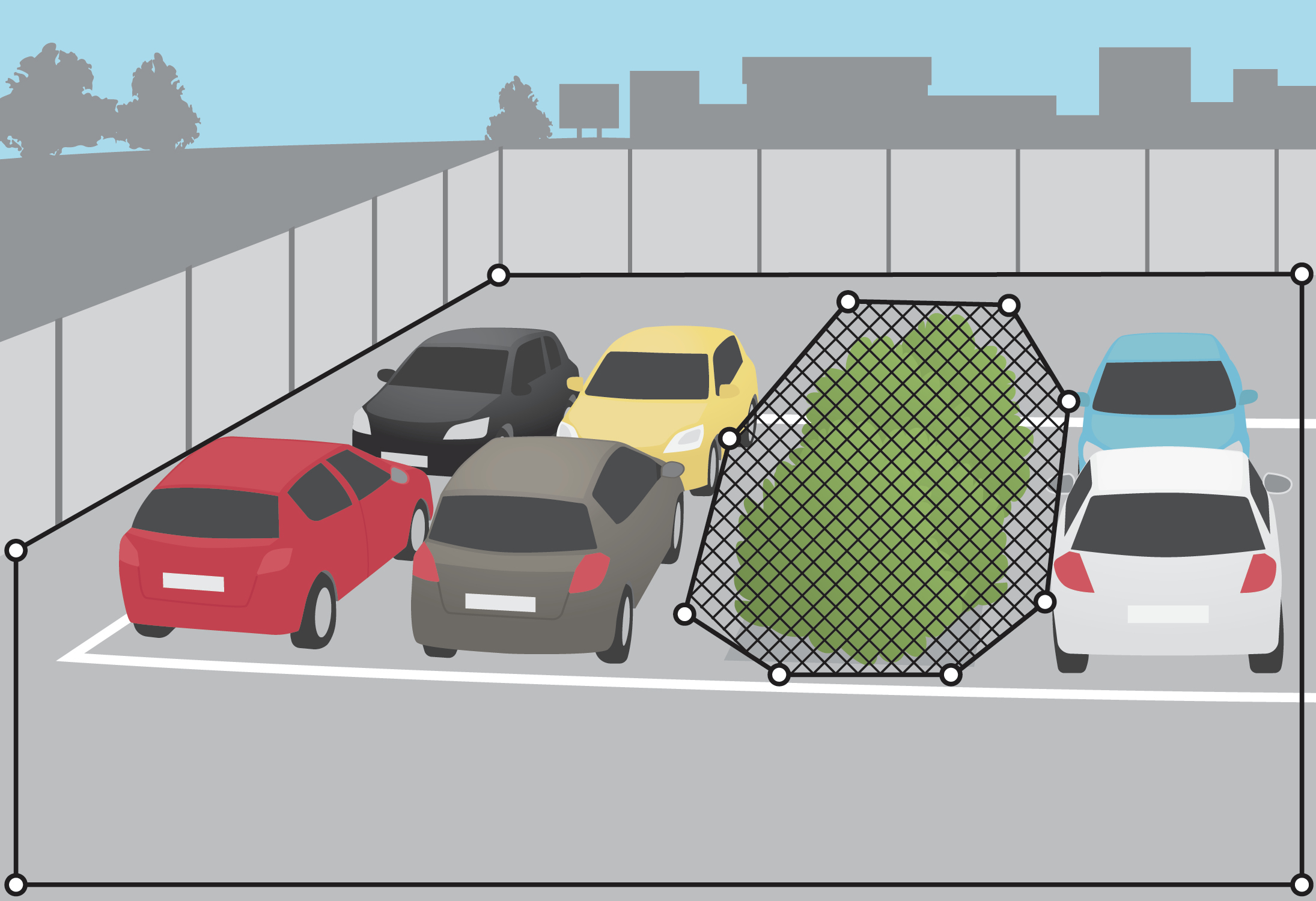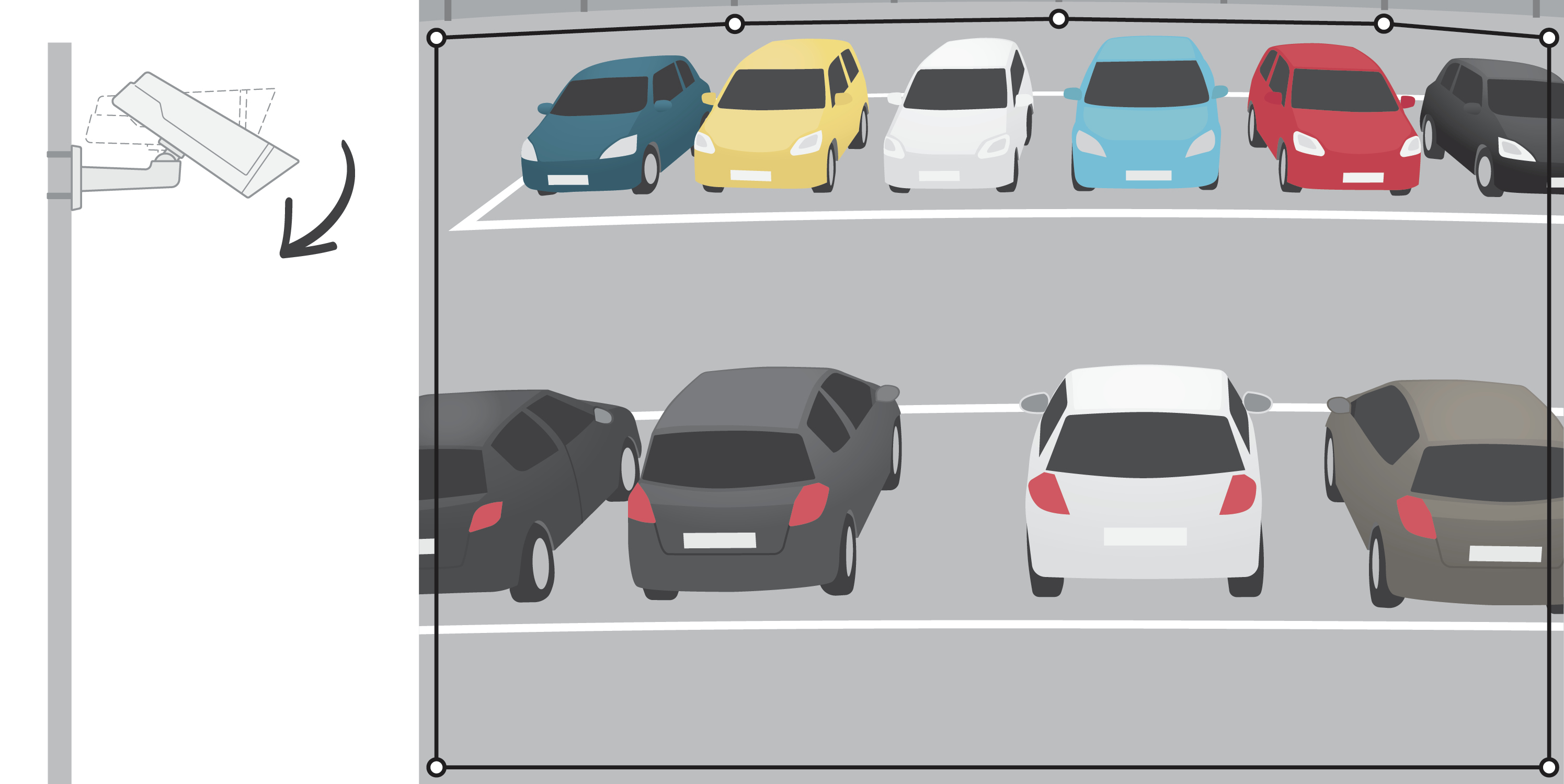About the application
AXIS Video Motion Detection monitors an area of interest and sends an alarm if people, vehicles, or other objects are moving in the area. The alarm can be used by Axis network video devices, and by third-party software, to, for example, record video and alert security staff.
To define the parts of the scene in which moving objects should be detected, use include and exclude areas.
To reduce false alarms, use filters to ignore objects such as swaying foliage, small animals and light beams from passing cars.
Requirements
The application can be installed on Axis network video devices that support AXIS Camera Application Platform. A complete list of compatible devices and firmware versions is available at axis.com/applications
The application is a license-free software.
We recommend the following browsers:
ChromeTM
Firefox®
Camera mounting recommendations
Before you start to use the application, consider the following recommendations:
Detection accuracy may be affected by weather conditions such as heavy rain or snow.
Make sure that the lighting conditions are within the product’s specification. Use additional lighting if needed.
Make sure that the camera is not subject to excessive vibrations. Vibrations might trigger false alarms.
Each time a PTZ preset position changes, the application needs to recalibrate. We recommend to wait at least 10 seconds before changing between preset positions in a guard tour.
Each time the ignore filters change, the application recalibrates. Objects detected before you change ignore filters therefore need some time to be redetected by the application.
Small and distant objects might not be detected.
Objects approaching in a straight line towards the camera need to move a longer distance before they are detected compared to other objects.
Install the application
To install applications on the product you need administrator rights.
To download the application, go to axis.com/applications.
Log in to the camera’s webpage.
Go to Settings > Apps and click Add.
Upload the application file (.eap) to the camera.
Start the application
Log in to the product's webpage and go to Settings > Apps.
Select the application.
Turn on the app with the toggle button.
Stop the application
Log in to the product's webpage and go to Settings > Apps.
Select the application.
Turn off the application with the toggle button.
Set up the application
This is an overview of how to set up the application.
Log in to the device interface as an administrator and go to Settings > Apps > AXIS Video Motion Detection.
Select the application and click Open.
To define the parts of the scene in which moving objects should be detected, use include and exclude areas.
Use visual confirmation to make sure that all objects that should be detected are detected.
Trigger an alarm with the test alarm function.
If the application triggers too many unwanted alarms, use one or more of the ignore filters.

- Live view
- Profile settings
- Test alarm and visual confirmation
How to work with profiles
Each profile triggers its own alarms and has its own settings, making it possible to create events with different actions in the camera and third-party software. For example, to use one configuration during the day and one during the night, create two profiles with different settings. Then create one action rule for each profile and use daytime and nighttime schedules as additional conditions.
- When to use multiple profiles:
to set up different configurations for day and night
to use multiple include areas
to set up different configurations for different PTZ preset positions
to set up different configurations for different areas of the scene, for example one area close to the camera and one further away from the camera to compensate for the different sizes of objects depending on where in the scene they appear
How to create a profile
Go to the application’s webpage and click
To rename the profile, go to Profile properties and click
Type the name in the text field and click Done.
How to delete a profile
If you delete a profile that is used by an action rule or by a third-party software, remember to delete or edit the action rule or third-party software as well.
- Click the cross on the profile’s tab or do the following:
Select the profile’s tab.
Go to Profile properties and click
Click and confirm by clicking Done.
How to connect a profile to a PTZ preset position
Each time the preset position changes, the application needs to recalibrate.
To restrict detection to a specific preset position, you can connect the profile to a preset position.
Go to the application’s webpage and select an existing profile, or click to create a new profile.
Turn on Connected preset position with the toggle button.
From the drop-down-list, select a preset position.
To detect motion in all preset positions, select All preset positions.
Include area
The include area is an area in which moving objects trigger alarms. Objects can trigger alarms even if only a part of the object is inside the include area. The application ignores any moving objects outside the include area.
The default include area is a rectangle that covers the whole image.
Use the mouse to reshape and resize the area so that it only covers the part of the image in which moving objects should be detected. The default rectangle can be changed to a polygon with up to 10 corners.
To add a new corner, click the border of the include area. Drag the corner to the desired position.
To move a corner, click and drag the corner to the new position.
To remove a corner, right-click the corner.
To move the entire include area, place the mouse pointer inside the area. When the pointer changes shape, drag the area to the new position.
To select the include area, click inside the include area, or click .
To reset the include area to its default size, click .
Recommendation
If there’s a busy road or sidewalk close to the include area, draw the include area so that objects outside the include area don’t accidentally get detected. This means you should avoid drawing the include area too close to the busy road or sidewalk.

Exclude areas
An exclude area is an area in which moving objects do not trigger alarms. Use exclude areas if there are areas inside the include area that trigger a lot of unwanted alarms. You can create up to 3 exclude areas.
Use the mouse to move, reshape and resize the area so that it covers the desired part of the image. The default rectangle can be changed to a polygon with up to 10 corners.
To add a new corner, click the exclude area border. Drag the corner to the desired position.
To move a corner, click and drag the corner to the new position.
To remove a corner, right-click the corner.
To move the exclude area, place the pointer inside the area. Click and drag the area to the new position.
To add an exclude area, click
To select an exclude area, click in the exclude area, or click
To remove an exclude area, click
Recommendation
Place exclude areas inside the include area. Use exclude areas to cover, for example, moving trees or vegetation that trigger false alarms.

Ignore filters
If the application triggers too many unwanted alarms, start by modifying the include and exclude areas. If too many alarms are still triggered, use one or more of the ignore filters:
- Short-lived objects
- Use this to ignore objects that only appear in the image for a short period of time.
- Small objects
- Use this to ignore small objects.
- Swaying objects
- Use this to ignore objects that only move a short distance.
Filter recommendations
Ignore filters are applied to all moving objects found by the application and should be set up with care to make sure that no important objects are ignored.
Use as few ignore filters as possible.
Set up one ignore filter at a time and use visual confirmation to check the settings before you turn on another filter.
Change the filter settings carefully until you’ve reached the desired result.
The short-lived objects filter
Use the short-lived objects filter to avoid alarms for objects that only appear for a short period of time, such as light beams from a passing car or quickly moving shadows.
When you turn on the short-lived objects filter and the application finds a moving object, the object does not trigger an alarm until the set time has passed. If the alarm is used to start a recording, configure the pre-trigger time so that the recording also includes the time the object moved in the scene before triggering the alarm.
Set up the short-lived objects filter
Go to the application’s webpage and select an existing profile or click to create a new profile.
Go to Ignore filters > Short-lived objects and click
Turn on the filter with the toggle button.
Enter the number of seconds in the field. The number of seconds is the minimum time that must pass before the object triggers an alarm. Start with a small number.
Click Done.
Use visual confirmation to verify the setting.
If the result is not satisfactory, increase the filter time in small steps.
The small objects filter
The small objects filter reduces false alarms by ignoring objects that are small, for example small animals.
When the image has a significant depth, the perspective needs to be calibrated. During calibration, the application compares the height of the objects as they appear in the image with the actual heights of the corresponding physical objects. The application uses the calibrated perspective to calculate the object size before applying the small objects filter.
- The filter applies to all objects in the image, not just objects in the same position as the setup rectangle.
- The application ignores objects that are smaller than both the entered height and the entered width.
How to filter small objects
- Take into consideration that an object far from the camera appears smaller than an object close to the camera.
- The filter applies to all objects in the image, not just objects in the same position as the setup rectangle.
- The application ignores objects that are smaller than both the width and height values.
Go to the application’s webpage and select an existing profile, or click to create a new profile.
Go to Ignore filters > Small objects and click
Turn on the filter with the toggle button.
Change the object size by doing one of the following:
To resize the rectangle in the live view, use the mouse. The application ignores all objects that fit inside the rectangle. To compare the filter size with the size of real objects in the image, place the rectangle in different places in the live view.
Enter the width and height in the fields.
Click Done.
The swaying object filter
The swaying objects filter ignores objects that only move a short distance, for example swaying foliage, flags, and their shadows. If the swaying objects are large, for example large ponds or large trees, use exclude areas instead of the filter. The filter is applied to all detected swaying objects and, if the value is too large, important objects might not trigger actions.
When the swaying object filter is turned on and the application detects an object, the object does not trigger an action until it has moved a distance larger than the filter size.
Set up the swaying objects filter
The filter ignores any object moving a shorter distance than that from the center to the edge of the ellipse.
- The filter applies to all objects in the image, not just objects in the same position as the setup ellipse.
- We recommend that you begin with a small filter size.
Go to the application’s webpage and select an existing profile, or click to create a new profile.
Go to Filters > Swaying objects and click
Turn on the filter with the toggle button.
To resize the filter in the live view, use the mouse or change the value in the Distance field.
To compare the filter size with the size of real objects in the image, place the ellipse in different places in the live view.
Click Done.
Visual confirmation
Use visual confirmation to make sure that all objects that should be detected are detected.
The visual confirmation shows outlines on all moving objects. A green outline indicates that the application has detected the object. A red outline indicates that the object triggers an alarm.
- Visual confirmation can cause video latency and affect performance during configuration.
- If you change PTZ preset position, the application needs a few seconds to recalibrate. This causes a delay before visual confirmation shows up again.
- To improve performance, visual confirmation automatically turns off after 15 minutes.
To turn on visual confirmation, click Visual confirmation.
How to use the application in multichannel products
In multichannel products, the application can be used on several channels simultaneously. Each video channel has its own profiles with an include area, exclude areas, and ignore filters.
For a complete list of supported multichannel products, see www.axis.com
- Running the application on several channels simultaneously may affect the product’s performance.
- To use the application on multiple channels, the application must be turned on and configured for each channel.
- To switch between channels, select from the list of channels in the live view.
- To disable a channel remove all its profiles.
Record video when there is an alarm
The following example explains how to set up the Axis device to record video to an SD card when the application triggers an alarm.
In the product’s webpage, go to Settings > Apps and make sure the application is running.
To check that the SD card is mounted, go to Settings > System > Storage.
Go to Settings > System > Events and add a rule.
Type a name for the rule.
In the list of conditions, under Applications, select the application profile. To trigger the same action for all profiles, select Any Profile.
In the list of actions, under Recordings, select Record video.
Select an existing stream profile or create a new one.
In the list of storage options, select SD card.
Make sure the SD card is mounted.
Go back to the application’s webpage. To test the rule, click Test alarm in the live view.
Use the VMD 3 event if you are using a video management software (VMS) that does not support Video Motion Detection 4 events. The VMD 3 event triggers the same action for all profiles.
Troubleshooting
| Too many false alarms |
If the application triggers unwanted alarms for objects outside the include area, point the camera so that the live view only covers the area of interest.   |